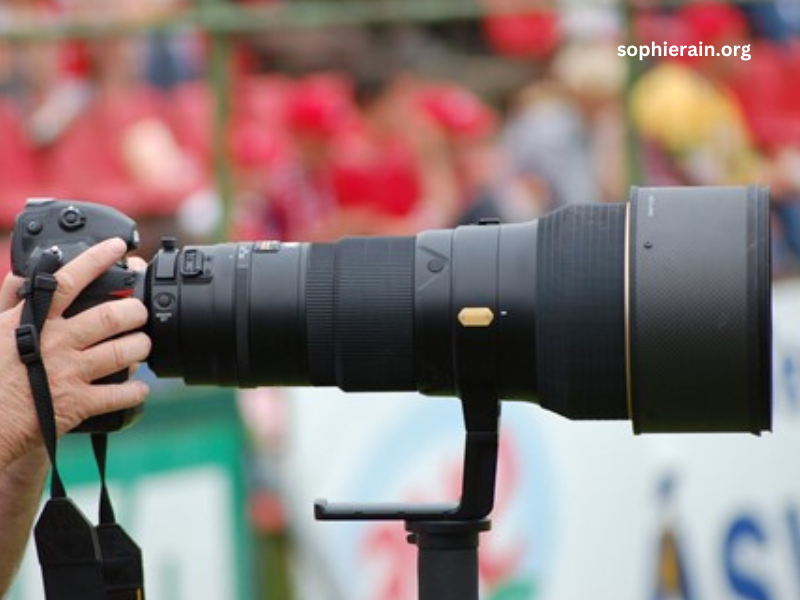Sports photography is an exhilarating field that captures the raw energy, movement, and emotion of athletes in action. Choosing the right camera is crucial for anyone looking to excel in this genre, as it directly impacts the quality of your images. In this article, we will explore the best cameras for sports photography, highlighting their key features, benefits, and why they stand out in the market. Whether you’re a professional photographer or an enthusiastic hobbyist, understanding the essential characteristics of a sports camera will help you make an informed decision.
Understanding Sports Photography
Sports photography demands a unique set of skills and equipment. The primary goal is to freeze moments of action, often in challenging lighting conditions and at high speeds. Here are some factors that make sports photography distinct:
- Speed and Performance: Athletes move quickly, and so must your camera. The ability to shoot at high frame rates and fast shutter speeds is essential.
- Autofocus System: A reliable autofocus system is critical for tracking moving subjects, especially in dynamic environments.
- Low Light Performance: Many sporting events take place indoors or during twilight, necessitating a camera that excels in low-light conditions.
- Durability: Sports photography can involve outdoor conditions, from rain to dust, so a rugged camera body is advantageous.
Key Features to Look for in a Sports Photography Camera
When searching for the best camera for sports photography, consider the following features:
- Continuous Shooting Speed: A camera capable of shooting 10 frames per second (fps) or more will allow you to capture rapid movements without missing crucial moments.
- Autofocus Capabilities: Look for cameras with advanced autofocus systems that can track subjects accurately. Features like face and eye detection can be beneficial.
- ISO Range: A wide ISO range ensures better performance in varying lighting conditions. Look for cameras with a good high-ISO capability to minimize noise in low-light situations.
- Video Capability: Many sports photographers also capture video. Having 4K video capability can enhance your storytelling and versatility.
- Lens Compatibility: Ensure that the camera you choose has a good selection of compatible lenses, particularly fast telephoto lenses, which are ideal for sports photography.
- Build Quality: A weather-sealed and durable body can withstand the rigors of outdoor sports photography.
Top Cameras for Sports Photography
Now that we’ve established the essential features let’s dive into the top cameras for sports photography in 2024. Each of these models excels in performance, offering the tools you need to capture stunning images.
Canon EOS R3
The Canon EOS R3 is a powerhouse for sports photographers, offering outstanding performance and flexibility.
- Continuous Shooting: It can shoot up to 30 fps with electronic shutter and 12 fps with mechanical shutter.
- Autofocus: Features Canon’s Dual Pixel CMOS AF II, which is incredibly fast and accurate, even in challenging lighting conditions.
- ISO Range: Offers a native ISO range of 100-102400, expandable to 50-204800.
- Video: 6K video recording at 60 fps, making it ideal for those looking to capture high-quality sports action.
- Durability: The body is weather-sealed, ensuring reliability in various environments.
Nikon Z9
The Nikon Z9 is another top contender, known for its impressive autofocus and speed.
- Continuous Shooting: Capable of shooting 20 fps in RAW and up to 120 fps in 11-megapixel mode.
- Autofocus: Offers 493 focus points with advanced subject detection for athletes and animals.
- ISO Range: Native ISO range of 64-25600, expandable to 32-102400.
- Video: Can shoot 8K video at 30 fps, perfect for capturing fast-paced sports.
- Build Quality: Robust and weather-resistant, making it suitable for outdoor use.
Sony A9 II
Sony’s A9 II is designed for speed and precision, making it a favorite among sports photographers.
- Continuous Shooting: 20 fps with the electronic shutter and 10 fps with the mechanical shutter.
- Autofocus: Fast Hybrid AF with 693 phase-detection points, allowing for excellent tracking of moving subjects.
- ISO Range: Native ISO range of 100-51200, expandable to 50-204800 for low-light situations.
- Video: 4K video recording with high frame rates for dynamic sports action.
- Durability: A magnesium alloy body with weather-sealing ensures resilience against harsh elements.
Fujifilm X-T4
The Fujifilm X-T4 is an excellent option for photographers who prefer a compact, lightweight camera without sacrificing performance.
- Continuous Shooting: Shoots up to 15 fps with the mechanical shutter and 20 fps with the electronic shutter.
- Autofocus: Features a sophisticated phase detection system with face and eye detection.
- ISO Range: Native ISO of 160-12800, expandable to 80-51200.
- Video: 4K video at 60 fps, catering to both photo and video needs.
- Build Quality: The body is weather-sealed, ensuring durability in various conditions.
Panasonic Lumix GH6
The Lumix GH6 is an exceptional mirrorless camera, especially for sports photography enthusiasts who also want robust video capabilities.
- Continuous Shooting: Offers 75 fps in a 4K burst mode, ensuring no moment is missed.
- Autofocus: Fast and accurate autofocus system with 225 focus points.
- ISO Range: ISO range of 200-25600, expandable to 100-12800.
- Video: 4:2:2 10-bit internal recording in 4K at 60 fps, making it ideal for high-quality video capture.
- Durability: Designed with a rugged build, making it suitable for outdoor sports photography.
Lenses for Sports Photography
Choosing the right lens is just as crucial as selecting the camera body. Here are some of the best lens options for sports photography:
- Canon EF 70-200mm f/2.8L IS III USM: A versatile zoom lens that offers excellent image quality, fast autofocus, and a constant f/2.8 aperture, perfect for low-light situations.
- Nikon AF-S NIKKOR 70-200mm f/2.8E FL ED VR: Known for its sharpness and speed, this lens is ideal for capturing fast-moving subjects with clarity.
- Sony FE 70-200mm f/2.8 GM OSS: A premium lens with outstanding image quality and fast autofocus, designed for use with Sony mirrorless cameras.
- Sigma 120-300mm f/2.8 DG OS HSM: A versatile sports lens that provides a longer reach while maintaining a fast aperture, great for outdoor sports.
- Tamron 150-600mm f/5-6.3 Di VC USD G2: An excellent choice for capturing distant action in sports like soccer or wildlife photography.
Tips for Capturing Great Sports Photographs
Here are some essential tips to help you make the most of your sports photography experience:
- Use the Right Settings: Opt for a fast shutter speed (1/1000s or faster) to freeze motion. Set your camera to continuous shooting mode to capture multiple frames in quick succession.
- Focus on the Action: Position yourself strategically to capture the best angles of the action. Anticipate the movements and be ready to shoot.
- Experiment with Composition: Don’t just shoot from the sidelines. Try different perspectives, such as low angles or close-ups, to add interest to your photos.
- Pay Attention to Lighting: Good lighting is crucial. If you’re shooting outdoors, try to shoot during the golden hours (early morning or late afternoon) for the best natural light.
- Practice Panning: For dynamic action shots, practice panning your camera with the movement of the subject. This technique can create a sense of motion while keeping the subject sharp.
Conclusion
Choosing the best camera for sports photography can significantly enhance your ability to capture thrilling moments in action. The Canon EOS R3, Nikon Z9, Sony A9 II, Fujifilm X-T4, and Panasonic Lumix GH6 are all excellent options that offer the speed, autofocus, and image quality needed for this demanding genre. Pairing these cameras with the right lenses will further improve your results, allowing you to create stunning sports photographs.
By understanding the essential features, exploring top camera options, and applying expert tips, you can elevate your sports photography to new heights. Whether you’re capturing a local game or a professional sporting event, the right equipment and techniques will ensure you don’t miss a single moment.






